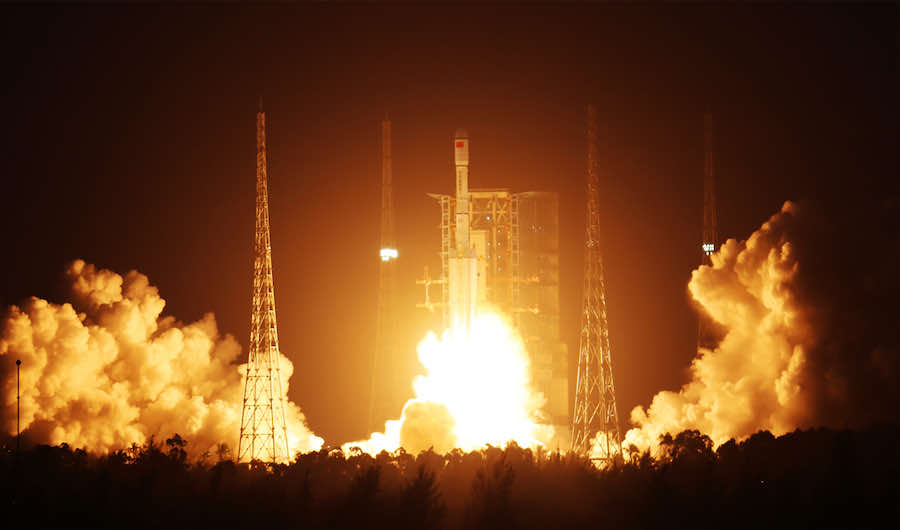
China launched two classified Shiyan satellites Dec. 23 into a geostationary transfer orbit aboard a Long March 7A rocket, one of the country’s newest launch vehicles. The mission took off from China’s Wenchang launch base on Hainan Island.
The 199-foot-tall (60.7-meter) rocket launched from Wenchang at 5:12 a.m. EST (1012 GMT) on Dec. 23, according to the China Aerospace Science and Technology Corp., or CASC, China’s biggest state-owned aerospace contractor.
The Long March 7A lifted off powered by six kerosene-fueled YF-100 engines — two on the rocket’s core stage and four under a cluster of strap-on boosters — and headed downrange over the South China Sea. The engines generated 1.6 million pounds of thrust before the boosters and core stage shut down and jettisoned.
A second stage with four kerosene-burning YF-115 engines fired next, then gave way to a hydrogen-fed third stage with two YF-75 engines. The third stage deployed the two satellites — designated Shiyan 12-01 and Shiyan 12-02 — into an elongated geostationary transfer orbit ranging between 120 miles (200 kilometers) and 22,245 miles (35,800 kilometers) above Earth, with an inclination of 19.5 degrees to the equator.
The orbital parameters suggest the Shiyan 12 satellites will use their on-board propulsion systems to circularize their altitude at more than 22,000 miles over the equator. At that altitude, known as a geostationary orbit, the satellites will circle Earth in lock-step with the planet’s rotation.
CASC and Chinese state media said the Shiyan 12 satellites will be “mainly used for space environment detection and related technical tests.”
Shiyan means “experiment” in Chinese. Some Shiyan satellites are believed by independent experts to have a military purpose.
The launch Thursday marked the seventh flight of a Long March 7 rocket, and the third using the Long March 7A configuration.
The Long March 7 is designed to launch medium-sized satellites, such as Tianzhou resupply ships for China’s space station in low Earth orbit. The Long March 7A variant flies with a reignitable third stage, giving the rocket an ability to deploy satellites — like the Shiyan 12 pair — heading into higher orbits.
The Long March 7A rocket can carry payloads of up to 15,400 pounds, or 7 metric tons, into geostationary transfer orbit.
China debuted the Long March 7A rocket in March 2020 after two successful flights of the basic Long March 7 configuration in 2016 and 2017. But the Long March 7A failed to reach orbit and fell back to Earth a few minutes after liftoff from Wenchang.
Chinese media reported one of the Long March 7A’s booster engines shut down prematurely on the failed March 2020 flight. Chinese officials blamed the failure on a pressurization problem in the liquid oxygen inlet feeding the engine.
The launch Dec. 23 was the fourth Long March 7 flight this year, including successful second Long March 7A mission in March, and two Long March 7 launches with Tianzhou cargo freighters for China’s space station.
Email the author.
Follow Stephen Clark on Twitter: @StephenClark1.
from Spaceflight Now https://ift.tt/3EFxQBS
via World Space Info







0 comments:
Post a Comment